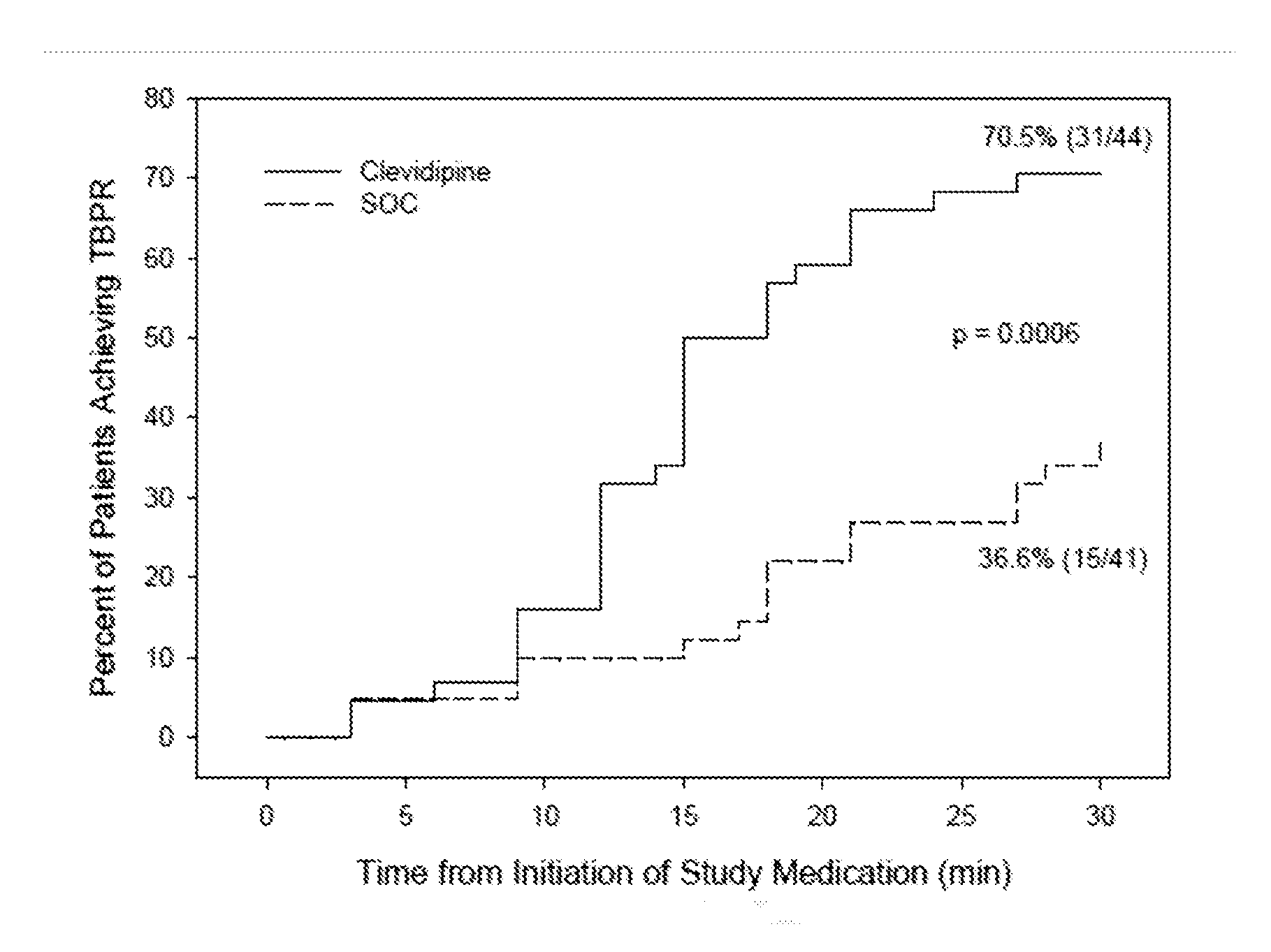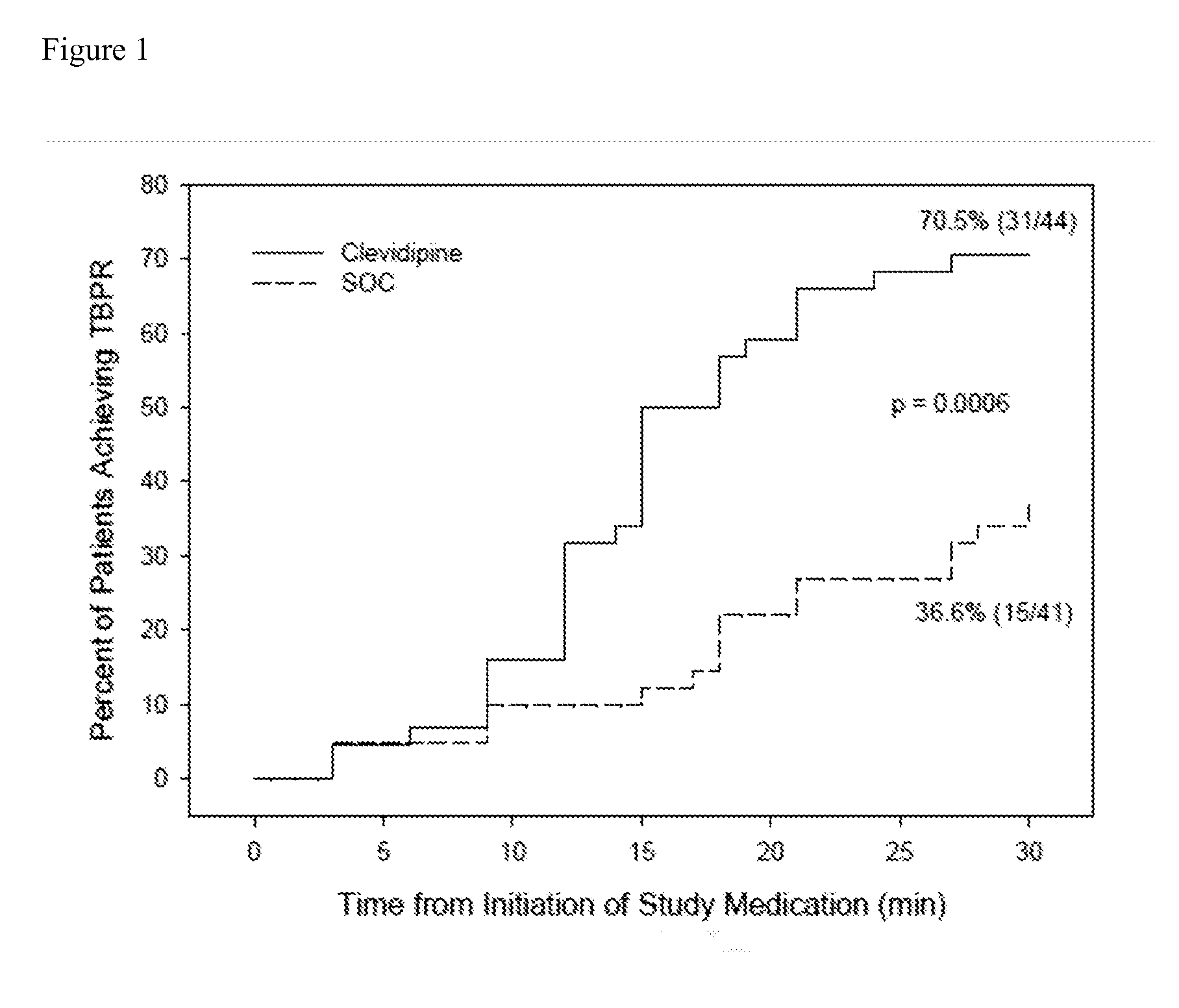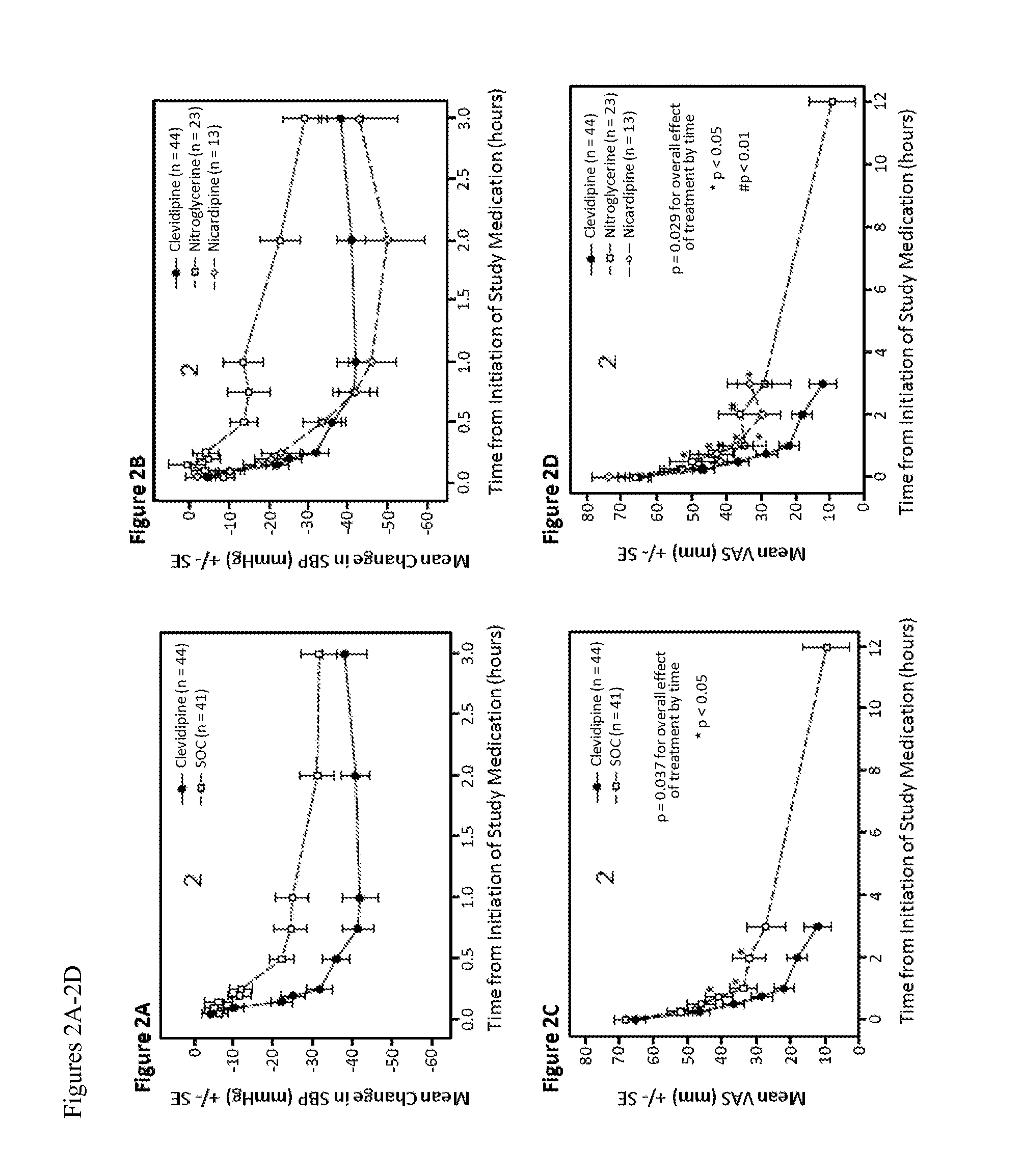Methods for Controlling Blood Pressure and Reducing Dyspnea in Heart Failure
- Summary
- Abstract
- Description
- Claims
- Application Information
AI Technical Summary
Benefits of technology
Problems solved by technology
Method used
Image
Examples
example 1
Clevidipine Improves the Management of Blood Pressure Associated with Acute Heart Failure
[0063]A randomized open label 13-center trial enrolled AHF patients with SBP of ≧160 mmHg, sitting dyspnea score ≧50 on a 100 mm VAS, and a physician's clinical diagnosis of AHF with pulmonary congestion by chest auscultation. Patients were excluded if they required endotracheal intubation, had contraindication to clevidipine (i.e., Cleviprex®), received any antihypertensive agent within the previous 2 hours (except short acting non-IV nitrates), had chest pain or electrocardiogram (ECG) changes, suspected aortic dissection, myocardial infarction within 14 days, pregnancy, known liver failure or renal failure, or pancreatitis. Eligible patients were randomized 1:1 to receive either clevidipine or SOC within one hour of emergency department presentation.
[0064]At randomization, the treating physician recorded a 30-minute target blood pressure range to reach a minimum of about 15% blood pressure re...
example 2
Clevidipine Improves Dyspnea Associated with Acute Heart Failure
[0079]The effect of clevidipine on dyspnea was assessed in the patients described in Example 1. Dyspnea was assessed by a 100 mm VAS, in which a score of 0 was “no dyspnea” and a score of 100 represented “worst possible dyspnea.” Dyspnea was evaluated immediately prior to study drug administration, and at 15, 30, 45, 60, 120, 360 and 720 minutes afterward. In addition, the Vasodilation in the Management of Acute Congestive Heart Failure (VMAC) scale, a relative 7 point Likert score, and the Provocative Dyspnea Assessment (PDA) (Pang et al, Eur Heart J2008, 29) were both performed in the seated and supine positions and recorded.
[0080]In the first 30 minutes after study drug administration, there was a marked dyspnea improvement that paralleled the blood pressure decrease in both groups (compare FIGS. 2A and 2C). At 45 minutes, the mean [SD] VAS decrease from baseline was greater in the patients treated with clevidipine, ...
example 3
Clevidipine May Improve Dyspnea in Acute Heart Failure Patients with SBP Below 160 mmHg
[0085]A controlled investigation is being conducted on the effects of clevidipine, as compared to a placebo or SOC, on patients with AHF, SBP ≧120 mmHg, and moderate-to-severe dyspnea (defined as ≧50 mm on a 100 mm self-reported VAS).
[0086]The investigation is divided into two stages: stage 1, which is a double blind study that will compare the effects of clevidipine and a placebo, and stage 2, which is an open label study that will compare the effects of clevidipine with SOC.
[0087]Enrollment
[0088]In stage 1, patients will be enrolled and randomized in a double-blind fashion, based on a clinical diagnosis of AHF by the attending physician, to receive either clevidipine or matching intravenous placebo in a 1:1 ratio. All patients will be randomized and treated within three hours of presentation to the emergency department. The patients will be allowed to receive all supportive therapy per the direc...
PUM
| Property | Measurement | Unit |
|---|---|---|
| Time | aaaaa | aaaaa |
| Time | aaaaa | aaaaa |
| Pressure | aaaaa | aaaaa |
Abstract
Description
Claims
Application Information
 Login to View More
Login to View More - R&D
- Intellectual Property
- Life Sciences
- Materials
- Tech Scout
- Unparalleled Data Quality
- Higher Quality Content
- 60% Fewer Hallucinations
Browse by: Latest US Patents, China's latest patents, Technical Efficacy Thesaurus, Application Domain, Technology Topic, Popular Technical Reports.
© 2025 PatSnap. All rights reserved.Legal|Privacy policy|Modern Slavery Act Transparency Statement|Sitemap|About US| Contact US: help@patsnap.com



